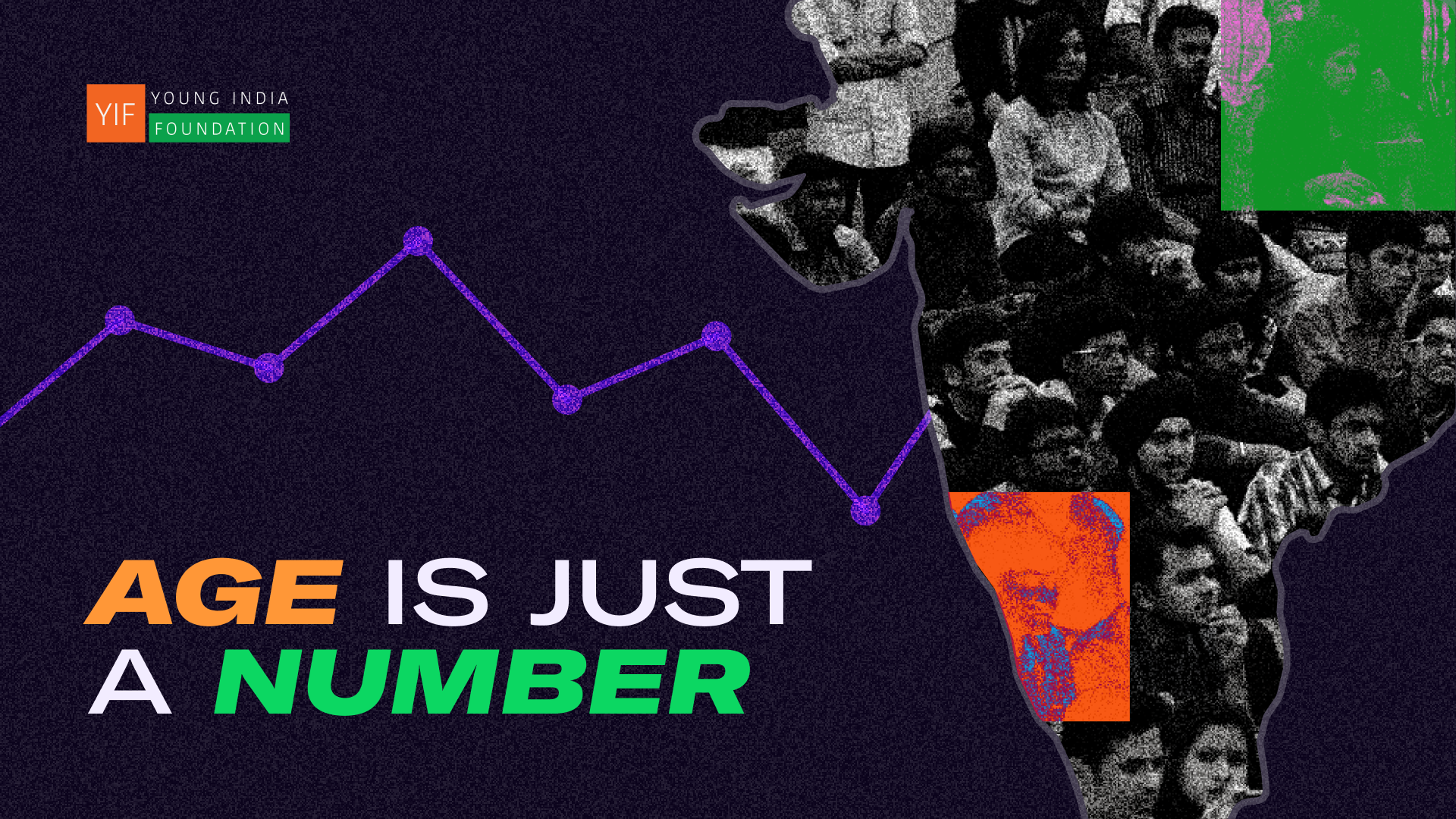Throughout South Africa’s history, young people have been central to the country’s struggles and transformations. Their courage and sacrifice marked a turning point in the liberation movement, demonstrating the power of youth as agents of change. In the democratic era, however, new challenges have emerged - mass unemployment, inequality, poor access to education, and social exclusion continue to undermine the promise of freedom for many young South Africans. To confront these persistent realities, the government introduced the National Youth Policy 2020–2030 (NYP 2030), a decade-long strategy aimed at empowering young people to lead the nation’s next phase of growth and transformation. When such a large stride has been taken by a government, how do we assess the success of such a policy? Is it in its progressive thought, or its effective change? We aim to answer this by analysing the NYP.
Youth Participation in South Africa: A Historical Lens
Before analyzing any South African youth policy, it is important to understand the context of what it means to be young and South African - especially in relation to the Apartheid movement. It not only informs our understanding of their political participation, but also the nature of the country’s youth itself.
Throughout South Africa’s modern history, young people have been central to shaping the nation’s political landscape. The student-led protests of June 1976 against the imposition of Afrikaans as a medium of instruction marked a pivotal moment in the fight against apartheid. Met with brutal repression by state security forces, these demonstrations ignited a broader wave of youth-led resistance. From that period until the unbanning of political organisations in 1990 and the beginning of negotiations for a democratic South Africa, young Black South Africans became increasingly active in the struggle. Schools transformed into hubs of mobilisation and defiance. Many young people endured state violence, and countless others - though their exact numbers remain unknown - participated directly in acts of resistance against the Apartheid regime. However, as the Apartheid movement was redirected towards shaping a new democracy, a lot of energy previously used for creating political change was then directed towards deviance and delinquency. Moral panic ensued about the activities of the youth, with some marking them as the ‘Lost Generation’. The label incorporated the concern that when the new democracy arrived, it would be undermined by generations of poorly educated citizens socialised into violence and criminality.
The Apartheid movement stands as a testament to the power of South African youth in creating lasting social and political change. However, it also provides context for the issues that they continue to face in the 21st century - such as being fragmented by race, gender, class, etc., as well as being exposed to institutional violence very early on.
Towards a New Future: The National Youth Policy of 2020-2030
The National Youth Policy of 2020-2030 was officially launched in 2021 by the Department of Women, Youth and Persons with Disabilities in partnership with the United Nations Population Fund (UNFPA) and the National Youth Development Agency. It was launched under the theme of “A decade of accelerating positive youth development outcomes”. Building on previous iterations, it was developed taking into consideration new challenges for the country - such as the COVID-19 pandemic, which amplified socio-psychological, administrative, and health concerns, and the objectives of what is calls the “fourth Industrial Revolution”. .It also took into account the 25-Year Review (1994-2019), which assessed South Africa’s progress since the end of Apartheid, identifying persistent inequalities and gaps. Another way in which it is different is its duration - unlike previous policies, which were of 5 years, this spans a decade, hoping to facilitate more long-lasting changes. 
The report focuses on five priority-areas policy-wise:
1. QUALITY EDUCATION, SKILLS AND SECOND CHANCES
The main focus is to prepare the country’s youth for the requirements of the Fourth Industrial Revolution. It emphasizes the need for an education system that can cater for different groups and produce highly skilled individuals relevant to the labour market demands. It also highlights the importance of equitizing quality education. The main recommendations are to improve school completion rates, expand Technical and Vocational Education and Training (TVET) and linking it to labour market needs, and offer “second-chance” employment opportunities to youth who have dropped out of school earlier.
2. ECONOMIC TRANSFORMATION, ENTREPRENEURSHIP AND JOB CREATION
The policy’s focus on job creation indicates that it is cognizant of the pervasive nature of unemployment in South Africa - especially among the youth. This was only exacerbated by the pandemic. In light of these facts, the policy proposes reforms both at the macroeconomic level - including the implementation of the Presidential Youth Employment Intervention (PYEI) – heralded as the “largest and most comprehensive plan to address youth unemployment in South Africa’s democratic history”.
3. PHYSICAL AND MENTAL HEALTH PROMOTION INCLUDING COVID 19
Although the policy has expanded on its response to COVID-19, it has equally addressed the issue of mental health and substance abuse that South Africans face. What is significant is that it highlights how issues such as substance abuse are often also a function of larger societal problems - such as unemployment, poverty, or violence. By doing so, it falsifies the notion that addiction is simply a personal problem - allowing for effective policymaking. In relation to mental health in particular, the policy recommends that South Africa address the SDG Target 3.5 to “strengthen prevention and treatment of substance abuse” through new care delivery models and technologies that provide more accessible and high quality healthcare. It also touches on the National Health Insurance - a health financing system designed to pool funds to provide access to quality affordable personal health services for all South Africans based on their health needs, irrespective of their socio-economic status. It advocates for inclusion of youth not just as beneficiaries of the system, but as able contributors to its design and roll out - making for a more equitable healthcare programme.
4. SOCIAL COHESION AND NATION BUILDING
This focus area reflects the policy’s social and moral dimension. It aims to cultivate a generation that values diversity, democratic participation, and community service. This area promotes volunteerism, social innovation, and initiatives that bridge divides across race, gender, and class. It also seeks to combat discrimination and gender-based violence, fostering a sense of shared identity and belonging among South Africa’s youth.
5. EFFECTIVE AND RESPONSIVE YOUTH DEVELOPMENT MACHINERY
Through this area, the policy addresses governance and accountability. It stresses the need for coordinated action among government departments, the private sector, and civil society to ensure that youth policies translate into tangible outcomes. This includes strengthening the National Youth Development Agency (NYDA), improving monitoring and evaluation frameworks, and ensuring that youth voices are integrated into decision-making processes at all levels of government.
Efficacy of the National Youth Policy: An Assessment
When assessing policy, one must examine two things - the proposals of the policy, as well as its implementation. The two must work in tandem for a successful outcome. In the case of South Africa, the proposals are well thought-out; the policy has delineated exactly where the issues lie and what the solutions may be. It has also taken into account the underlying causes of these problems - such as the historical gender, race, and class divide, which is imperative in understanding the larger issues at hand. The policy is also cross-sectoral - ambitiously integrating various departments and even the youth with the goal of fulfilling its objectives in mind.
However, the efficacy of South Africa’s youth policies is still in question. This is especially intriguing because, even as one of Africa’s most industrialised nations, policy implementation falls short when contrasted with countries such as Rwanda and Ghana, which have far fewer resources at its disposal. Rwanda offers one of the continent’s most coherent and results-driven youth policy frameworks. Its Youth Sector Strategic Plan (2024–2029) provides a clear roadmap with measurable indicators and a dedicated budget of Rwf 49 billion. This approach sets specific targets for reducing youth unemployment and improving access to technical and vocational education. Programmes such as the Priority Skills for Growth and Youth Empowerment (PSGYE) initiative, supported by the World Bank, aim to reach over 200,000 young people with skills development aligned to labour market needs. Rwanda’s success lies not only in policy articulation but also in budget clarity, inter-ministerial coordination, and strong monitoring systems - features that South Africa’s NYP often lacks. Ghana’s model offers another instructive contrast through its emphasis on decentralisation and participation. The National Youth Authority (NYA) and local youth parliaments provide structured, community-level platforms for civic engagement. These mechanisms allow youth to shape policy decisions and monitor outcomes in real time. Ghana’s success lies in converting policy commitments into localized structures that strengthen accountability and inclusion. South Africa, by comparison, relies on national frameworks with weaker provincial and municipal coordination, making youth policy delivery less responsive to local realities.
As mentioned before, another reason for the non-implementation of policies in South Africa is by virtue of the historical fragmentation of its population - by race, gender, and sex. The issues faced by people vary both in type and degree across demographics; South Africa’s simplistic and one-size-fits-all policies are not effective in such a scenario. Systemic barriers must be taken into account so that more specific and realistic policies can be created to overcome them.
Conclusion
South Africa has succeeded in creating a comprehensive policy to promote youth development in the nation. However, it is lagging behind other countries in its implementation. The main recommendation would be to create specific policies, targets, and monitoring bodies to ensure that there is lasting change in the country. This can be achieved through linking progress with markets, or particular parameters – creating measurable outcomes. Governments and legislatures must recognize the potential that South African youth has historically demonstrated, and harness that for the growth of the nation by creating a level playing field for all.
.jpg)



 (15).png)